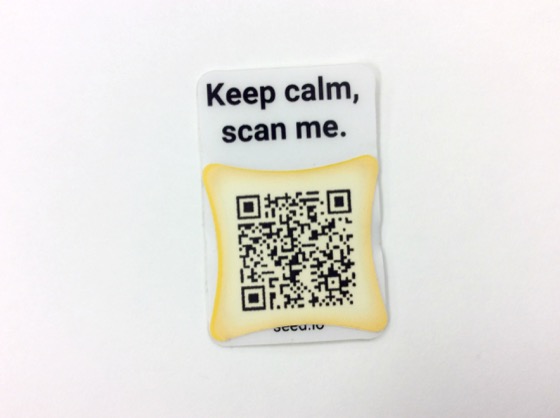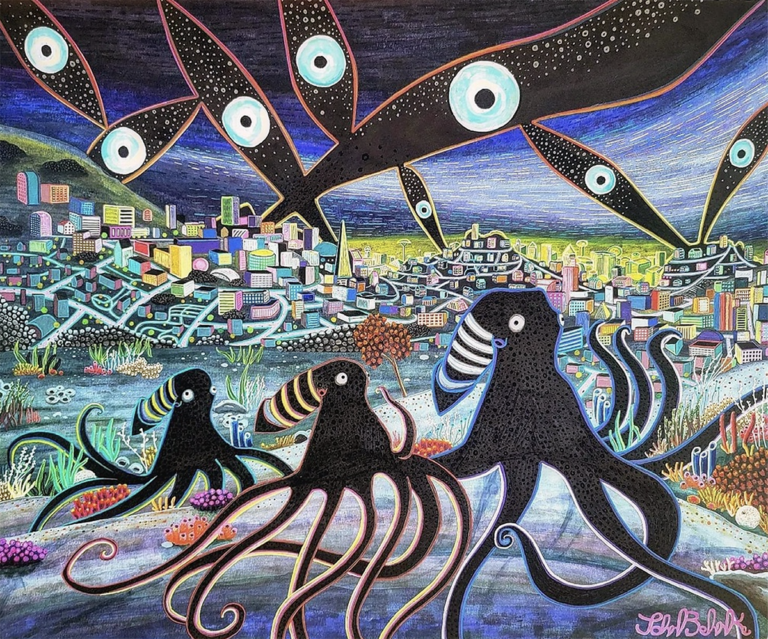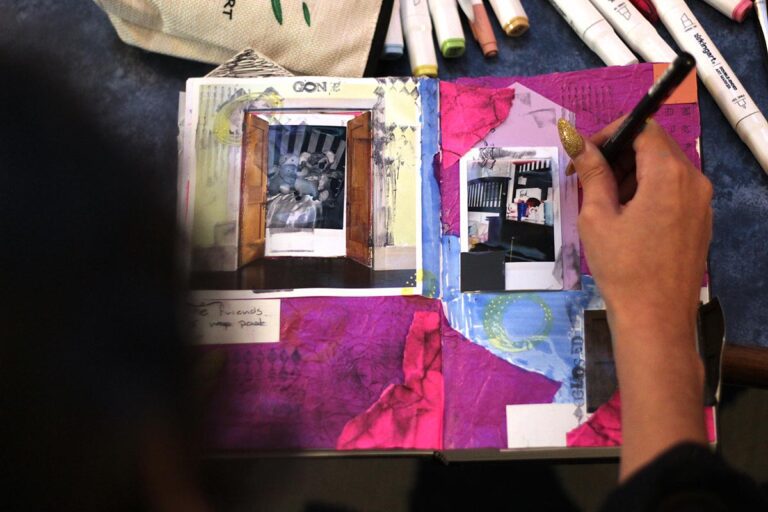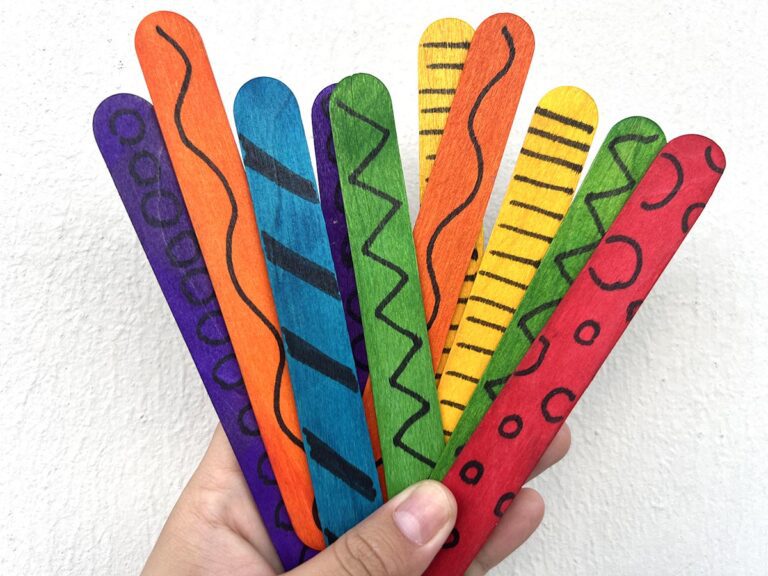As artists and teachers, we know the power of collaboration. Collaborating with others allows us to test out and talk through ideas, gain valuable insight and feedback, and is often more enjoyable than working alone. In our classrooms, we can see the same effects on students during collaborative projects. Often, the outcomes of collaborative projects go way beyond what we ever envisioned.
If you’re looking for an easy and innovative way to involve your school community in collaboration, you’ll want to check out Seed Tags.
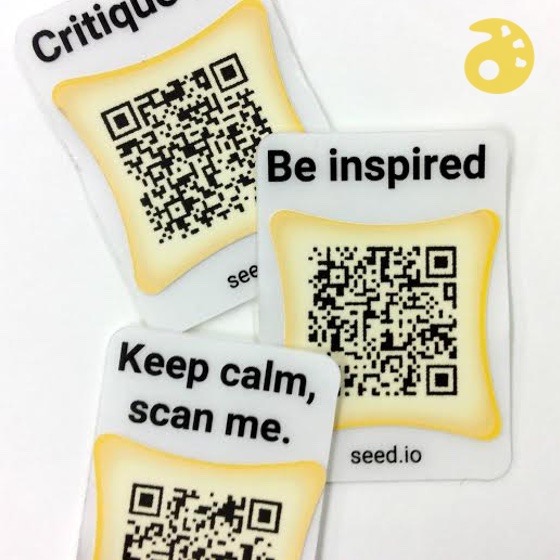
The brainchild of California-based entrepreneurs William Roscoe and Ian Wilson, Seed Tags allow users to scan QR codes in order to participate in interactive activities, and they’re perfect for a school setting. There are just so many possibilities. Plus, for the time being, they’re free!
To get a feel for how Seed Tags work, check out the video below. Then, read on to see some ways that Seed Tags could take your art room experiences to the next level.
http://youtu.be/zD6ltOVIryM
Getting Started
To get started, you will need a set of Seed Tag stickers, which will be unique to you. You will use these stickers to tag items or places. For example, you may choose to put a sticker on your classroom door or somewhere in the hallway next to an art display. Each sticker requires a short set up process to “claim” it. To do this, you just have to scan the tag using any free QR reading app. You will then be directed to the Seed.io website where you will be prompted to enter your cell phone number (no one sees that but you!).
Once you’ve claimed your tag, a forum is created for that tag on which people can communicate. You can choose to add a title, help text and even images. (Tip: Look for the option on your QR reader to open the link in a browser (like Safari). From there, it should allow you to add photos.) As soon as someone leaves a comment on your tag, an alert is sent to the cell phone number connected to the tag so you can go view it.
Using Seed Tags in the Classroom
There are so many different ways you could use Seed Tags in your art room. Below are 5 examples.
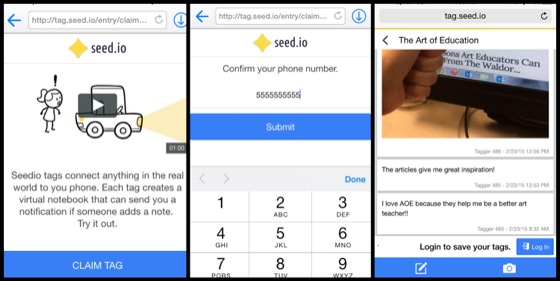
1. Critique Us
Stick a tag next to a hallway display. Visitors or students can scan the tag and leave their thoughts about the artwork.
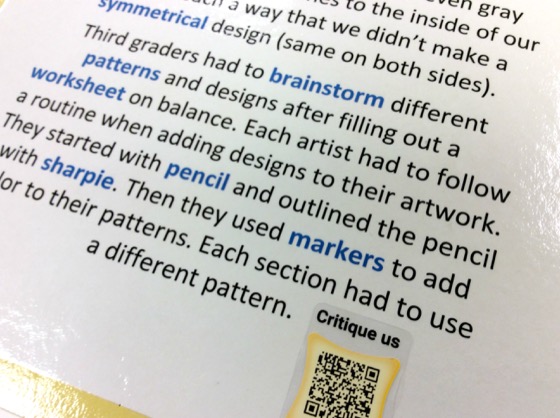
2. Check Point
During a school art show, post enlarged copies of your tag around the school. Have your guests “check-in” by scanning the tags, then answering questions such as, “Who is your favorite artist?” or “Why is art important?” You could also have guests leave feedback about the art show itself, sharing what they liked best.
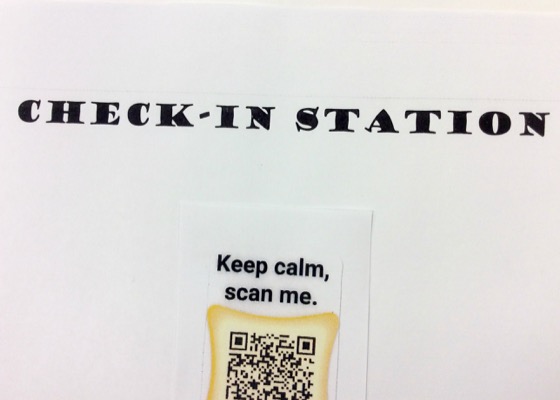
3. Challenge Them
Create a scavenger hunt for your students. Set it up so that each time your students scan a tag, it asks them to complete a challenge such as, “Find a warm color in the room, snap a photo, and post it here.”
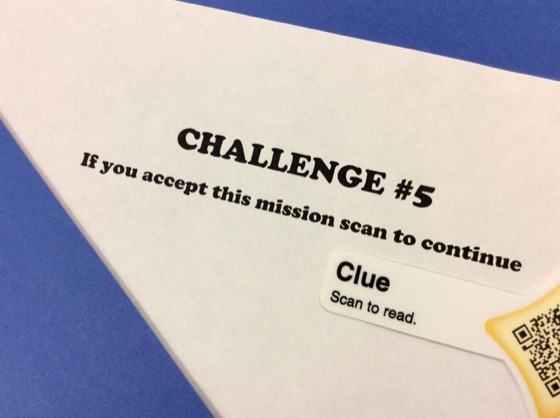
4. Question Them
Make a copy of a famous artwork and a tag and place them on each table group. Have the tag take students to a page where they can read about the artwork and respond to questions. Questions like, “What do you think is happening?” or, “What symbols do you see in this piece?” will really get them thinking! All of their responses will come directly to you when they are finished. (Tip: It’s important to note that all comments left are anonymous, so if you want to know which student commented, ask them to leave their names at the end of their responses.)
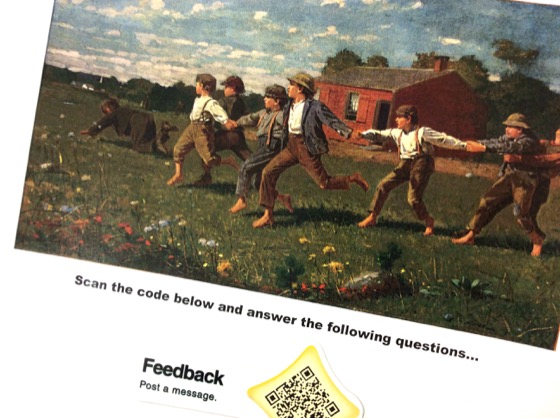
5. Inspire Them
Place the tags around your school in areas where staff and students can access them. Set it up so that when scanned, people are taken to a page where they can read an inspirational quote or view an inspirational piece of work. You could even change the photo each week in order to feature a different student artist.
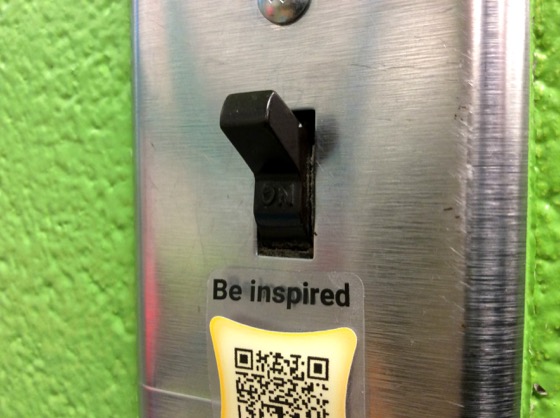
Try it Out!
Scan the tag below with your QR reader and answer the question we’ve left for you. You might just see your comment on Facebook in the near future!
Don’t forget to go snag your own set of Seed Tags tags today. Special thanks to Will and Ian for printing us our own special tags and introducing us to this interactive online experience.
How would you use Seed Tags in your classroom?
How have you used QR codes in your classroom?
Magazine articles and podcasts are opinions of professional education contributors and do not necessarily represent the position of the Art of Education University (AOEU) or its academic offerings. Contributors use terms in the way they are most often talked about in the scope of their educational experiences.
